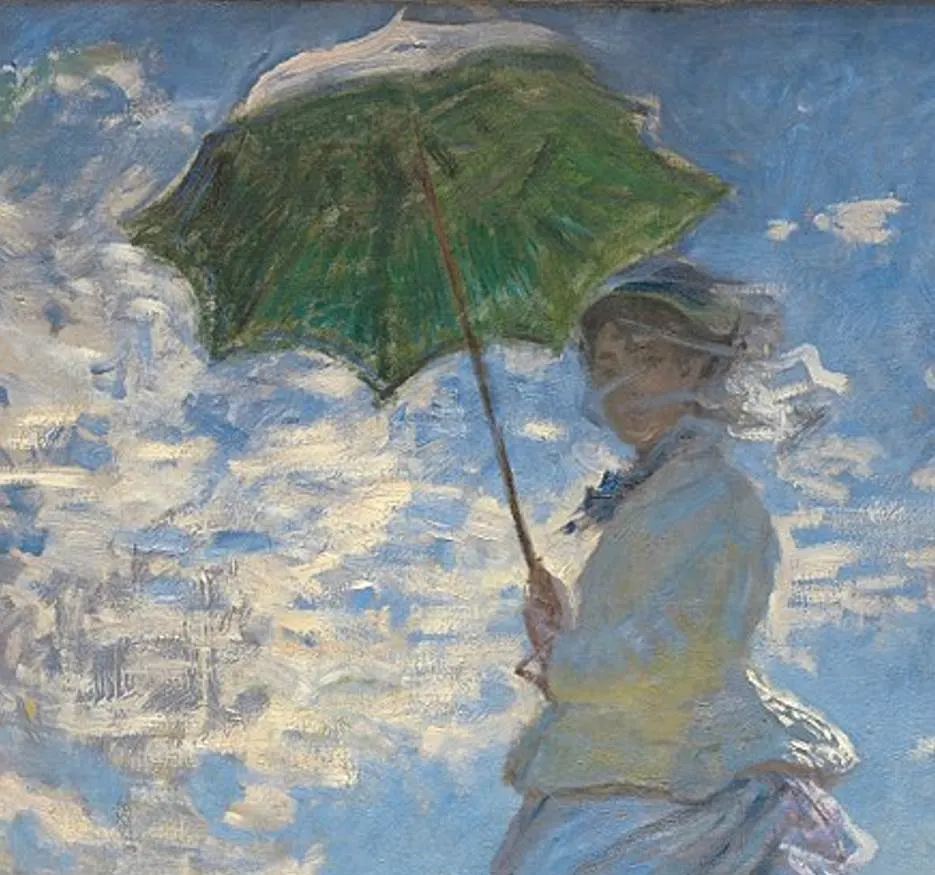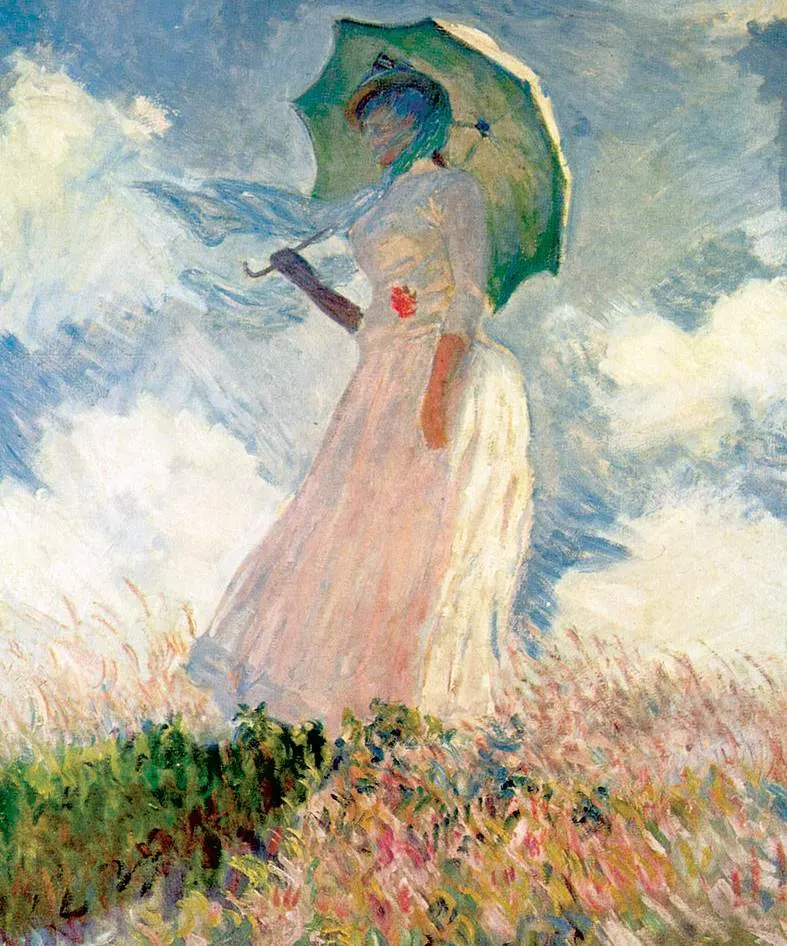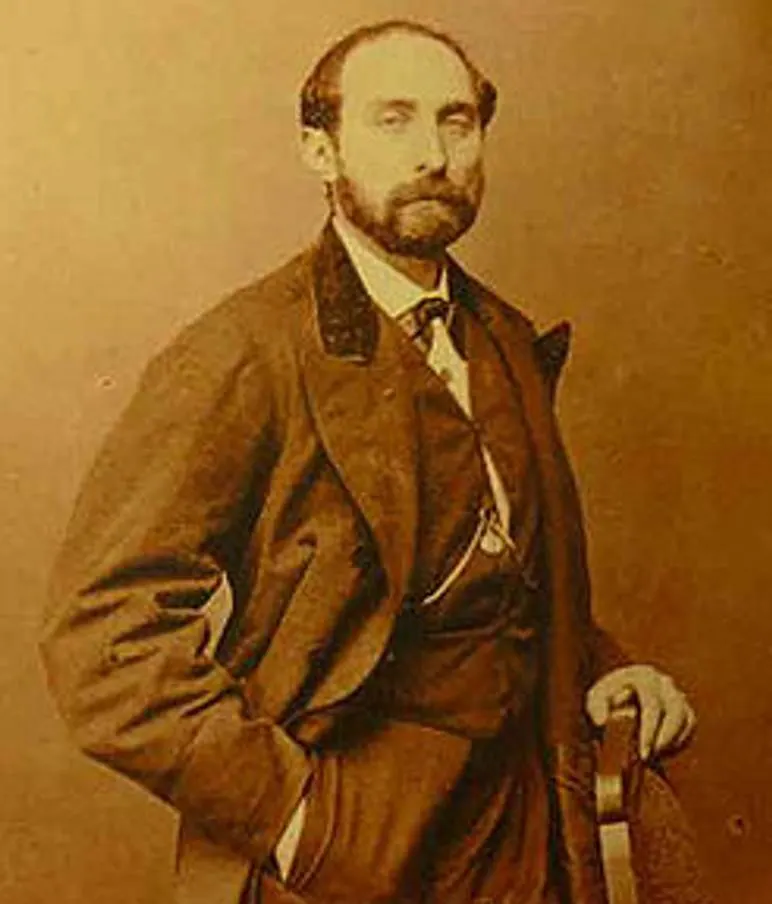Claude Monet (1840-1926) was the founding father of Impressionism. He developed the technique of painting what he perceived, often including a sense of motion using visible brushstrokes.
His painting “Impression, Soleil Levant” or “Impression, Sunrise,” coined the term for this important art movement of the 19th century.
One of the most distinctive Impressionist paintings ever produced features two members of his family.
In this article, you’ll discover the most interesting facts about Woman with a Parasol by Claude Monet, one of the artist’s ultimate masterpieces.
1. It was completed shortly after he returned to France in the 1870s
The 19th century was a turbulent one in France. The aftermath of the Napoleonic Wars and a second French Revolution were followed by the Franco_prussian War in 1870.
During this event, Claude Monet and his new wife Camille-Léonie Doncieux briefly moved to London to escape the war.
Here, Monet was able to study the paintings of J.M.W. Turner and John Constable, two renowned Romantic artists, and it had a profound effect on his career.
He completed Woman with a Parasol in 1875, a couple of years after he had settled down in the town of Argenteuil, not too long after returning to France in 1871.

2. It depicts the artist’s wife and his first son Jean
Although it’s hard to determine who the artist depicted, the figures in the painting represent his wife Camille and their eldest son Jean Monet (1867-1914).

The woman is depicted with a parasol as she hides from the shade on a windy summer afternoon in the meadows near Argenteuil.
Camille’s veil and dress are blowing in the wind as she gazes toward the viewer. Their 7-year-old son Jean is depicted in the background and is only partially visible.

3. It features several elements that define the Impressionist movement
The painting depicts Monet’s family as they take a stroll in the open fields near their house. Monet set up his easel in the field and painted this work in a couple of hours.
Painting “En Plein Air” was a distinctive characteristic of Impressionist artists. This was opposed to academic artists who produced preparatory drawings and complete the main work inside a studio.
The visible brushstrokes and the somewhat hazy view of the scene, which is how the artist perceived it, are other characteristics that make this one of the ultimate masterpieces of Impressionism.

4. Monet replicated the painting 10 years later featuring his stepdaughter
Camille Monet, unfortunately, died from cancer in the year 1879. He relocated once more in the year 1883 to Giverny, a small town about 80 kilometers (50 miles) northwest of Paris.
He found new love with Alice Hoschedé (1844-1911). She had a daughter named Suzanne Hoschedé who became the favorite model of the painter.
He depicted her several times in the 1880s in a similar pose as he painted his first wife in Woman with a Parasol. These paintings are now part of the collection of the Musée d’Orsay in Paris.

5. It was exhibited in 1876 and it inspired an American artist
The first exhibition of the Impressionists took place in pairs in the year 1874. Impression, Sunrise was part of this exhibition along with numerous other Impressionist paintings.
The second exhibition took place in the year 1876 at the gallery of renowned art dealer Paul Durand-Ruel. Woman with a Parasol was featured at this event.
One of the visitors to the second Exhibition of Impressionists was American artist John Singer Sargent (1856-1925), one of the most famous portrait painters in history.
He was so amazed by Monet’s painting that he produced his version titled “Two Girls with Parasols at Fladbury” in 1889. This painting is part of the collection of the MET in New York City.

6. Monet managed to sell the painting a year after it was completed
John Singer Sargent wasn’t the only admirer of the painting. Several other art patrons enjoyed this remarkable new style.
Although the new generations of art enthusiasts and some art patrons enjoyed the works exhibited at the Exhibitions of Impressionists, they were generally ridiculed by academic critics.
Monet had to make a living and was in financial difficulties during this period in his life so he had to sell his works. This painting was acquired by his homeopath named Georges de Bellio (1828-1894).
This man can be described as one of the first patrons of the Impressionists and an amateur art collector who helped the artists make a living.

7. How big is Woman with a Parasol by Claude Monet?
Because Claude Monet painted in the open air, he had to deal with the weather conditions. This didn’t allow him to paint monumental works of art.
This notion is emphasized by the fact that this is the largest painting that he produced during the 1870s.
Woman with a Parasol by Claude Monet is an oil on canvas painting that has dimensions of 100 × 81 centimeters (39 × 32 inches).
8. Where is the painting located today?
The painting is officially titled “Woman with a Parasol – Madame Monet and Her Son” and has an interesting history of ownership.
It was inherited by his daughter Victorine and her husband Ernest Donop de Monchy following the death of Georges de Bellio in 1894.
They only briefly owned it as they sold it to an unknown art dealer in the late 19th century. It was sold to a Parisian art dealer named Georges Menier in 1924.
It was bought by one of the richest Americans named Paul Mellon and his wife Bunny Mellon in the year 1965. They bequeathed the painting to the National Gallery of Art in Washington D.C. in 1983.
The NGA is where you can admire this masterpiece by Claude Monet today.

